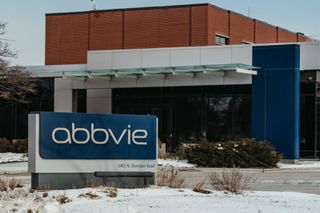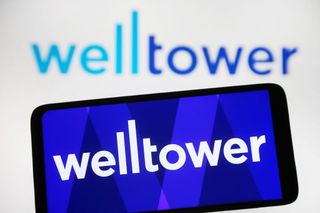
At its July policy meeting, the Federal Open Market Committee (FOMC) left interest rates unchanged, but Federal Reserve Chair Jerome Powell indicated in his subsequent press conference that a September rate cut could be on the table.
Recent data pointing to a slowdown in the economy has also ramped up expectations that the central bank will start cutting interest rates sooner rather than later.
Indeed, according to CME Group’s FedWatch Tool, futures traders are pricing in 47% chance the Federal Reserve will cut rates by a quarter-percentage point at its next meeting in late September – and a 54% probability they’ll lower the federal funds rate by 50 basis points (0.50%).
Sign up for Kiplinger’s Free E-Newsletters
Profit and prosper with the best of expert advice on investing, taxes, retirement, personal finance and more – straight to your e-mail.
Profit and prosper with the best of expert advice – straight to your e-mail.
And the cuts are expected to continue over subsequent Fed meetings until the federal funds rate hits its median 2026 target of 3.1%, as stipulated by the central bank’s Summary of Economic Projections, or “dot plot.”
These are not binding predictions, of course, but suggest an FOMC outlook that favors lower rates in the very near future.
So how should investors prepare for lower interest rates and the potential for additional cuts at the Federal Reserve in the coming months?
The following five stocks are all good options for investors to consider as they generally benefit from lower interest rates. What’s more, each is showing particular strength in operations right now.
AbbVie

(Image credit: Jamie Kelter Davis/Bloomberg via Getty Images)
- Sector: Healthcare
- Market value: $335.0 billion
- Dividend yield: 3.3%
You might not think a healthcare stock would be first in line to benefit from a discussion about rate cuts, but AbbVie (ABBV) is a great example of a company that can benefit from the cheaper borrowing costs that come from lower interest rates. That’s because AbbVie has a strong and reliable cash flow of more than $22 billion annually along with a significant debt load of about $70 billion.
Generally speaking, companies with a financial footprint like AbbVie can borrow a bit more freely (and cost-effectively) when rates dip. This can include issuing new corporate bonds, as well as restructuring existing debt for a more favorable payment schedule. As a research-driven pharmaceutical company, ABBV needs cash readily available so that it can finance the potential treatments in its product pipeline; lower rates allow it the financial headroom it needs to do so.
And if rates don’t budge for a bit? No sweat. AbbVie is one of the top five pharmaceutical companies by revenue, so it’s not going anywhere. What’s more, it’s one of the best dividend stocks for dependable dividend growth and offers a generous 3.3% yield.
Constellation Energy

(Image credit: Getty Images)
- Sector: Utilities
- Market value: $59.3 billion
- Dividend yield: 0.8%
A very different business but perhaps one that’s even more capital-intensive is Constellation Energy (CEG), a utility stock that’s focused on generating renewable energy. The company operates about 33,000 megawatts of generating capacity consisting of nuclear, wind, solar, natural gas and hydroelectric assets — as you can imagine, building more of those dams, solar arrays and wind farms isn’t cheap. Lower-cost financing will mean an easier path to growth for CEG.
It’s also worth noting that the current elevated interest-rate environment hasn’t held Constellation back. Shares are up a stunning 80% in the last 12 months on a total return basis (price change plus dividends) – an amazing feat for a stock that’s in a typically sleepy sector of Wall Street.
And high-energy applications like artificial intelligence (AI) and crypto mining are driving up demand for utility companies. Plus, the renewables focus of CEG positions it well in an age of climate change, it’s easy to see why investors are optimistic about this stock.
That success has happened even as the Fed has kept interest rates at their highest levels in roughly two decades, so a decline in key borrowing rates could help spark a continued rally in shares.
Ford Motor

(Image credit: Getty Images)
- Sector: Consumer discretionary
- Market value: $40.2 billion
- Dividend yield: 5.9%
Ford Motor (F) was one of several automakers that scaled back production of its much-anticipated electric-vehicle (EV) fleet over the last year. This was because the current economics of EVs is a bit more challenging than executives had hoped. For instance, higher borrowing costs are causing headaches for car buyers as well as for carmakers who need to retool factories to accommodate the shift.
But make no mistake, the future of cars is electrified — and, as evidenced by Ford’s Lightning F-150 and its all-electric Mustang Mach-E, the company is steadily moving in that direction. It just needs a bit more incentive to pick up the pace and a downshift in interest rates may help it do exactly that.
With more than $100 billion in long-term debt, interest rates matter as much as the product mix to an automaker like Ford.
Verizon Communications

(Image credit: Omar Marques/SOPA Images/LightRocket via Getty Images)
- Sector: Communication services
- Market value: $171.4 billion
- Dividend yield: 6.6%
Verizon Communications (VZ) has an even bigger debt load than Ford – roughly $173 billion, according to Morningstar. As such, the telecom giant is another example of a large company with stable cash flows and a strong balance sheet that would benefit from cheaper debt financing under lower interest rates.
Operating the largest wireless network in the U.S. with about 115 million subscribers is not a cheap business model. Furthermore, even as Verizon is investing in upgrading and maintaining its wireless network, the company is spending aggressively on fiber optic connectivity for homes and businesses with more than 57,000 fiber miles deployed since 2020.
VZ is the bluest of blue chip stocks, with a massive market cap and a generous 6.6% dividend, so it’s not going anywhere. But lower interest rates may help it maintain an edge going forward.
Welltower

(Image credit: Pavlo Gonchar/SOPA Images/LightRocket via Getty Images)
- Sector: Real estate
- Market value: $71.6 billion
- Dividend yield: 2.3%
Senior housing specialist Welltower (WELL) is one of many real estate stocks that will benefit from rate cuts. This is because lower interest rates will reduce the borrowing costs for those looking to buy new land or build new facilities. Unlike some of the riskier plays in real estate, however, WELL stock is doing quite well, even under a regime of higher rates.
Specifically, occupancy at its properties is improving while cost pressures are declining. In a recent business update to investors, Welltower increased its dividend payout 10%, and it now boasts a healthy 2.3% yield. What’s more WELL also raised guidance for its funds from operations, a key measure of financial health for real estate investment trusts (REITs).
It’s hard to bet against the persistent demographic trend of aging Americans, so there’s a clear long-term case to be made for Welltower. And with shares up nearly 40% in the last 12 months on a total return basis – outperforming the S&P 500 – and the prospect of lower rates potentially boosting performance in the months ahead, there are clearly reasons to consider this as one of the top stocks to buy for a Fed rate cut.



